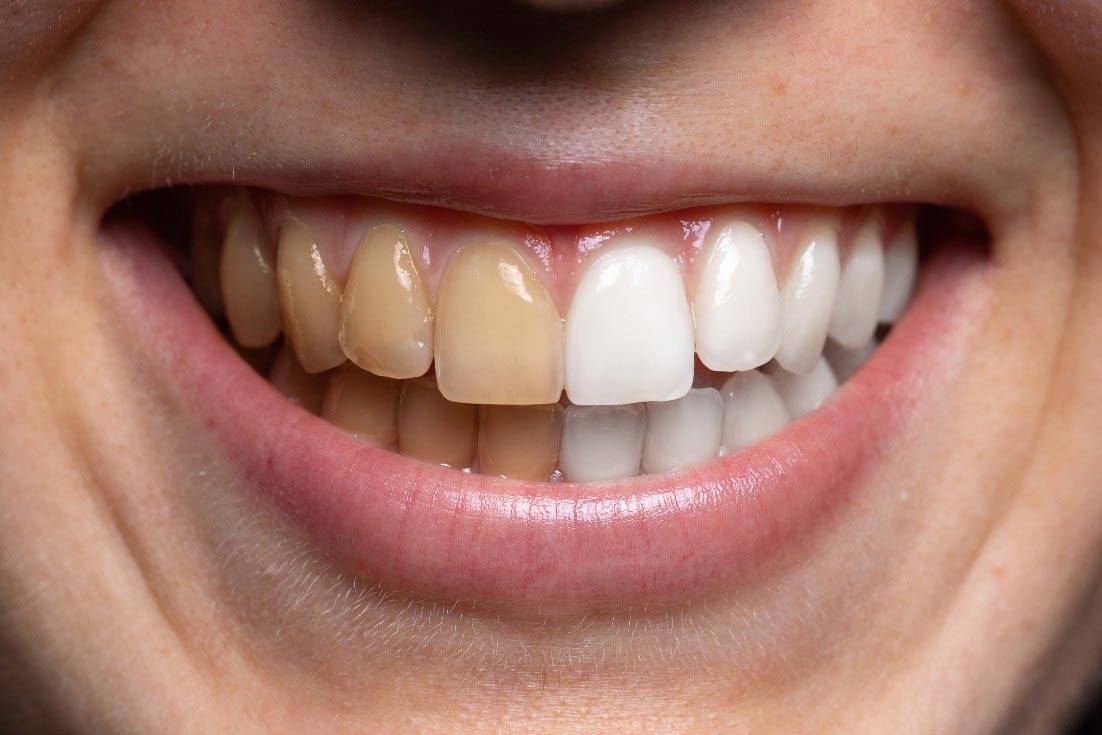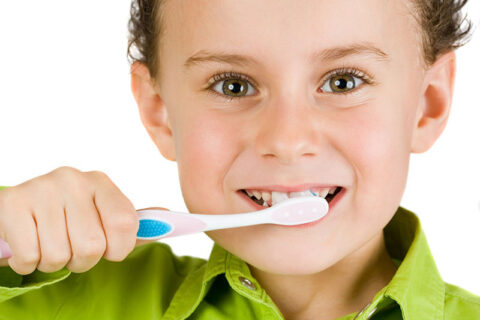How Do Teeth Become Stained?

There’s no shortage of teeth whitening solutions. From in-office lasers to at-home whitening kits and snap-on veneers, there have never been more ways to achieve a white smile! But, before you order a custom kit or hit up the drugstore for whitening strips, there’s more you should know about teeth discoloration.
Not all stains are created equal, and the cause of yours needs to be taken into consideration when selecting a whitening solution. Teeth stains fall into one of three categories:
Extrinsic Stains
An extrinsic tooth stain is one on the surface enamel or outside of the tooth. Although it’s the hardest part of the tooth, enamel comes into contact with everything you consume. Over time, pigmented residue from food and beverages builds up and is absorbed by the enamel, creating a stain.
While coffee and cola are common tooth-staining culprits, any food or beverage with dark tannins can result in tooth discoloration, including dark berries, fruit juices, and tomato-based sauces. Additionally, some starchy foods, like pasta and potatoes, can also create conditions that cause staining. Porous teeth and thinning enamel can also increase the likelihood of extrinsic stains.
To help keep your smile white, consider using a straw when drinking potential stain-causing beverages. Rinsing your mouth with water after drinking will also help prevent stains by removing pigmented particles from the surface before they can be absorbed. The good news is that extrinsic stains are limited to the enamel, making them the easiest to remove. Extrinsic stains can generally be treated using regular dental cleanings and various teeth whitening products, such as whitening toothpaste.
Intrinsic Stains
Intrinsic tooth stains occur when dentin, the sensitive layer underneath the enamel, becomes stained. Common causes of intrinsic tooth stains include:
- Fluoride – Excess fluoride consumption during enamel formation can create brownish staining or mottling.
- Decay – Tooth decay appears as a greyish-black color that usually begins where the tooth meets the gum. Pulp necrosis (when the inner pulp dies) causes discoloration to the entire tooth.
- Medications – Antibiotics that contain tetracycline and doxycycline can discolor still-developing teeth in children (typically those under the age of eight). Additionally, some antihistamines, antipsychotic drugs, and antihypertensive medications are linked to teeth discoloration.
- Aging – As we age, the outer layer of enamel wears away, revealing the natural yellow color of the underlying dentin. Grinding and hard brushing can also cause the appearance of the teeth to darken.
- Tooth trauma – Nerve damage can cause teeth to darken or become discolored.
Since intrinsic stains exist on a deeper layer of the tooth, they are not as easily addressed as enamel stains and may require more extensive dental treatment, such as in-office whitening solutions or at-home tray-based whitening products.
Age-Related Stain
Age-related stains are the result of extrinsic and intrinsic staining. Your body changes as you get older, and your teeth are no exception.
Intrinsically, tooth enamel thins as you age, and your core tissue (dentin) naturally yellows. Together, these factors allow the dentin to show through, making it more apparent. When combined with extrinsic stains caused by years of tobacco usage and/ or consuming certain foods and beverages, even the healthiest teeth will show staining.
Similar to intrinsic stains, age-related staining affects the dentin of your teeth. So, more intensive whitening techniques used for intrinsic stains work best with aging teeth. It’s also important to note that professional cleanings every six months can remove stains that daily brushing and flossing can’t. These visits also allow your dentist to check for age-related dental problems like dry mouth, tooth decay, gum disease, and more.
Schedule a Consultation
If you’re dissatisfied with the appearance of your teeth due to dental stains or tooth discoloration, we can help. Contact our dental team to schedule a consultation.


